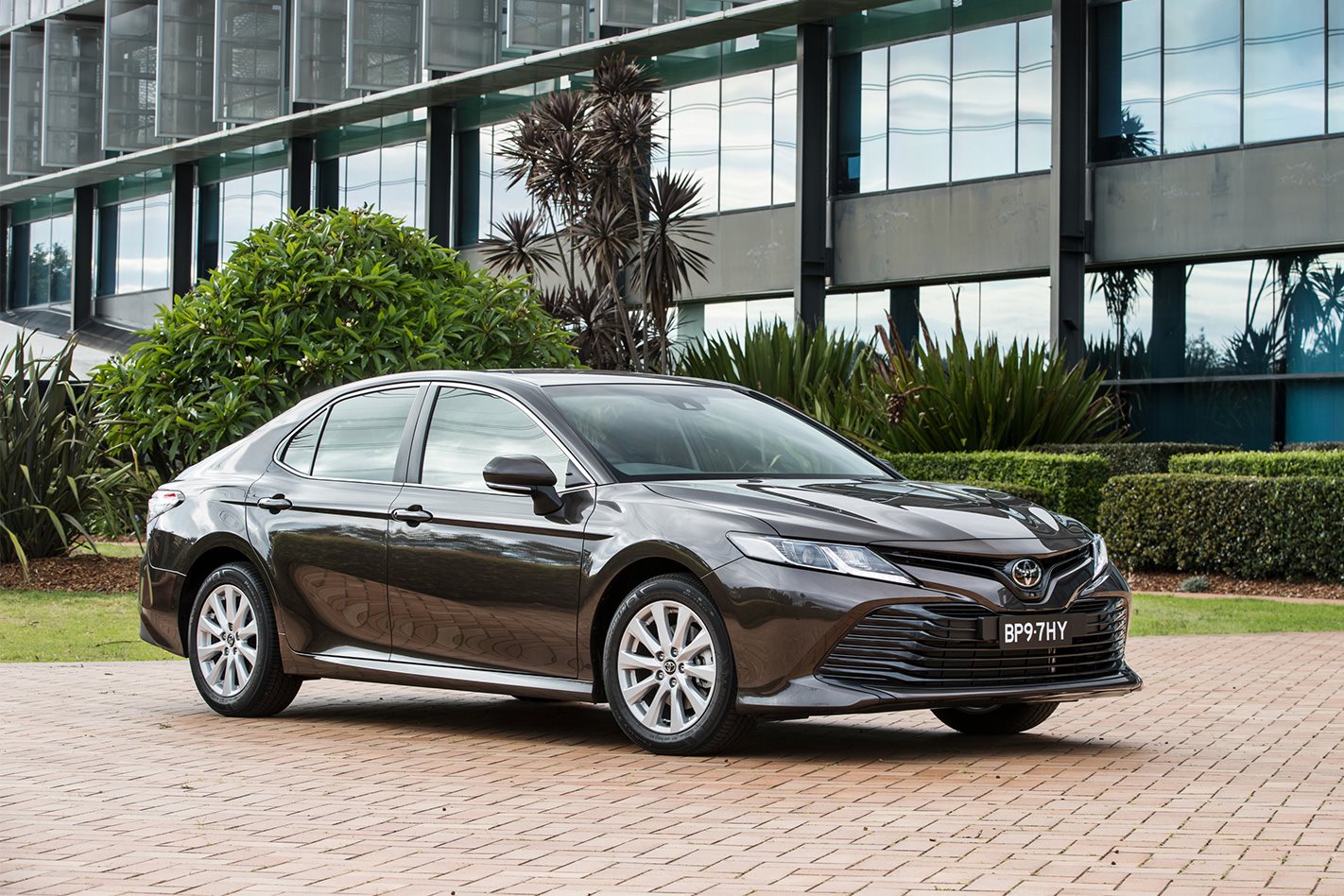
In the wake of the loss of Australian manufacturing, Toyota has replaced the formerly Australian-made version of the Camry Hybrid with a fully imported Japanese one.
TELL ME ABOUT THIS CAR
While it’s sad to think we’ve lost the ability to make things here, it has allowed Toyota to bring in the most advanced version of the Mazda 6 rival yet, featuring safety standards the locally made one sadly lacked.
Here, we’re testing the Camry Ascent Hybrid, which at $29,990 is the cheapest petrol-electric powered Camry you can buy.
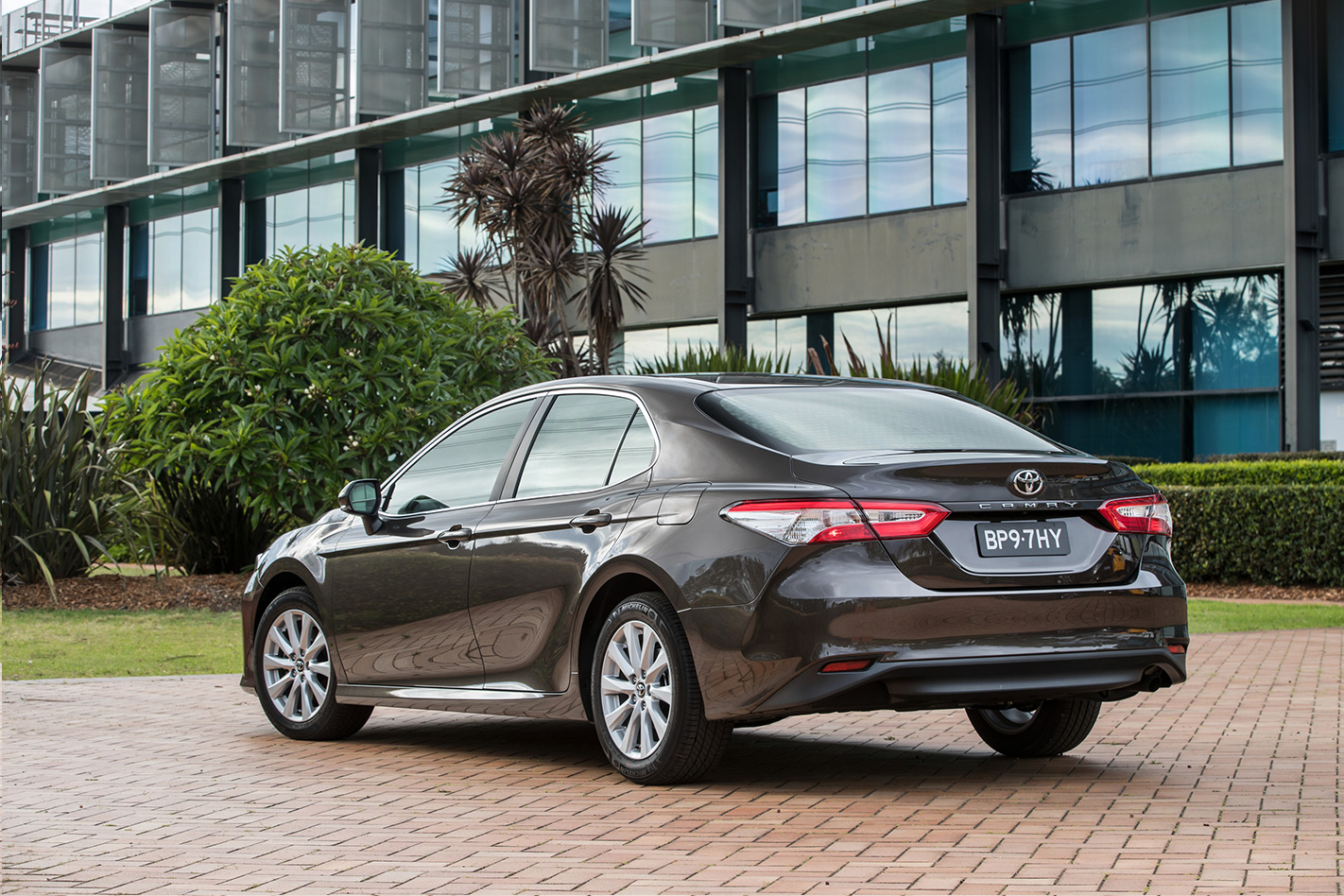
STRENGTHS
- It’s the most advanced Camry we’ve driven yet. The latest generation of the Camry, its eighth, moves to what is called the Toyota New Generation Architecture. It brings big advances in terms of crash safety, the driver aids that Toyota can build into the car, and the way it drives.
- Parts of the Camry are really well built. The panel gaps and shut lines – the gaps between a closing door and the rigidly fixed panels around it – are tight and consistent. It’s almost luxury car in its measurements.
- It’s much more comfortable inside than before. Soft-touch surfaces – either plastic or fake leather – cover almost every area that a hand or elbow falls.
- Interior space is generous. The Camry will seat five adults in comfort. The driver’s seat includes electric lumbar adjustment.
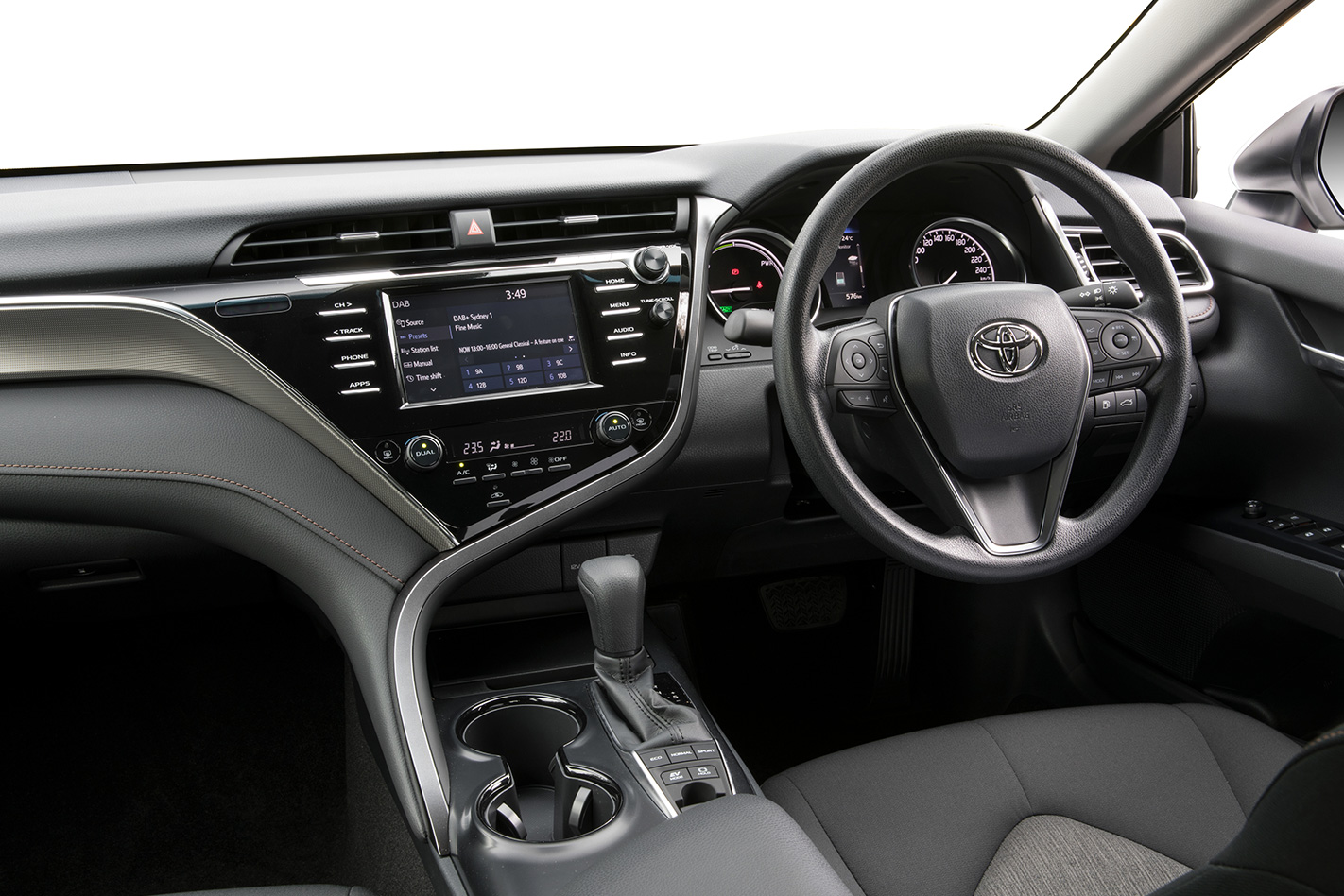
- The hybrid drivetrain is a powerful combination. Jump away from the traffic lights, and the combined 160kW 2.5-litre petrol four-cylinder engine and its electric motor feels more like a V6 in the way it builds speed. In the wet, you may even spin the front wheels.
- It rides and handles very well. The Camry is able to soak up all the imperfections of the road surface, and it’s even a bit of fun to tip into a corner. That’s very un-Camry-like.
- Fuel economy is very good. On test, we averaged 4.9L/100km according to the trip computer.
- It’s well kitted out for a relatively cheap car. The Camry Ascent Hybrid has keyless entry and push-button start, an electric handbrake, a digital speedo, active cruise control, and a system that will beep at you if the Camry starts to drift out of its lane.
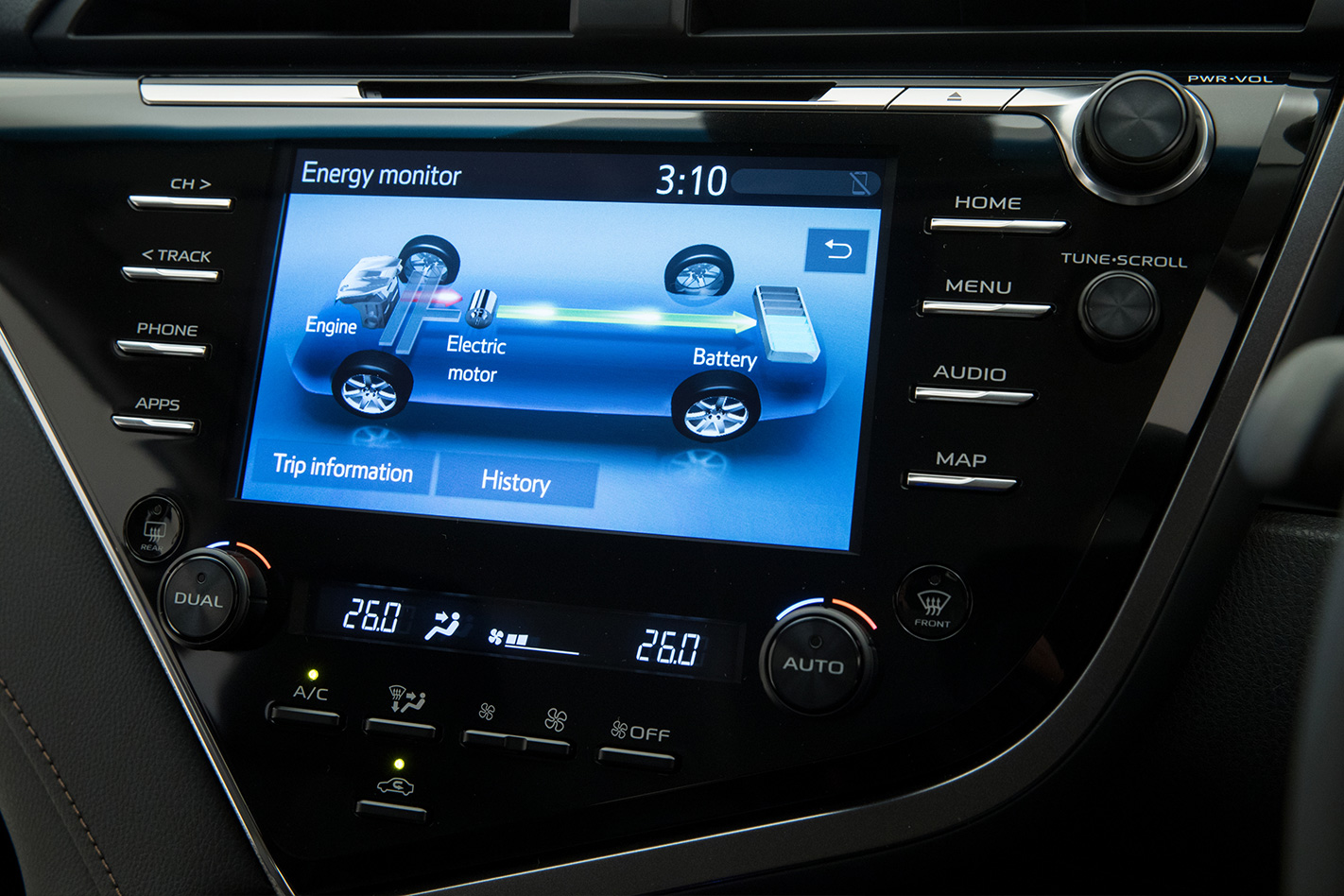
- The six-speaker audio system is good. Sound reproduction is better than you’d expect in what is, in the scheme of things, a cheap sedan.
- The steering feel is much improved over the previous version. The Australian-built Camry’s overly assisted steering was never a strong point, but in this version you feel more of a connection with the front wheels.
- It’s quiet. The cabin is a step-up for suppressing road noise, and the 17-inch alloys wrapped in 215/55 profile tyres are a relatively quiet combination.
- Rethinking the way the batteries are packaged means the rear seats can now split-fold 40:60 via levers in the boot. It adds versatility – the Aussie-made car couldn’t fold its rear seats down.

WEAKNESSES
- The hybrid system still feels very second-generation Toyota Prius. You get a sense the Camry Hybrid uses hand-me-down technology rather than the latest and greatest reserved for its environmental poster car.
- The brake pedal is awkward to use. The Camry uses regenerative braking to mop up energy normally lost through braking, and converts it into electricity that is stored in the batteries housed beneath the rear seat. However, the electronics that scrape the braking power come in rather suddenly, making smooth braking difficult. It feels as though you’re either pushing the pedal too much, and then in the next moment too little.
- The multimedia system doesn’t support Apple CarPlay or Android Auto. Instead, you have to register online and then download a Toyota app to your phone, and use software that feels more at home running on a desktop computer with a CRT screen.
- It feels a bit cheap from the driver’s seat. The cloth on the flat front seats feels like someone has turned a wetsuit inside out, while you grip a plastic steering wheel.
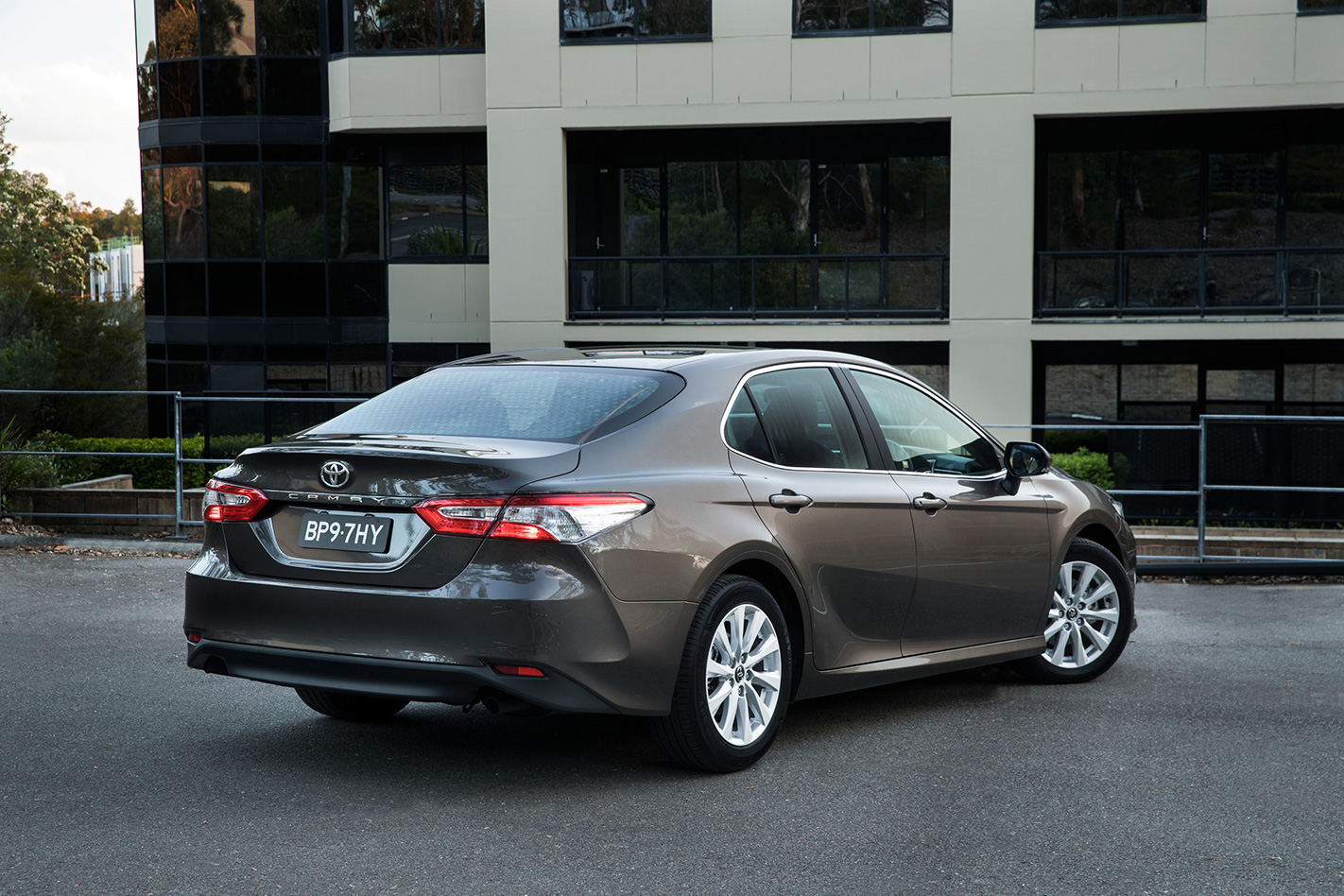
- Parts of the Camry aren’t built so well. We found a large gap between panels on the centre console, and even the way the rocker cover on the door sill integrates with the front panels looked a bit off. Toyota quality is usually better than this.
- Only the driver’s door would unlock when you pulled on the inside door lever. It meant front- and rear-seat passengers had to unlock their door before opening it. I could not find a setting that would switch that feature off.
- The headrests in the rear seats are fixed rather than adjustable. It means they don’t offer any active whiplash support that can minimise neck injuries in a rear-end shunt.
ANY OTHER RIVALS I SHOULD CONSIDER?
The Toyota Camry is the only hybrid-engined midsize sedan in its class. However, you may also want to consider the Volkswagen Passat, Mazda 6, Skoda Octavia, Honda Accord, Kia Optima, Ford Mondeo, Hyundai Sonata, Holden Commodore, and Subaru Liberty.



